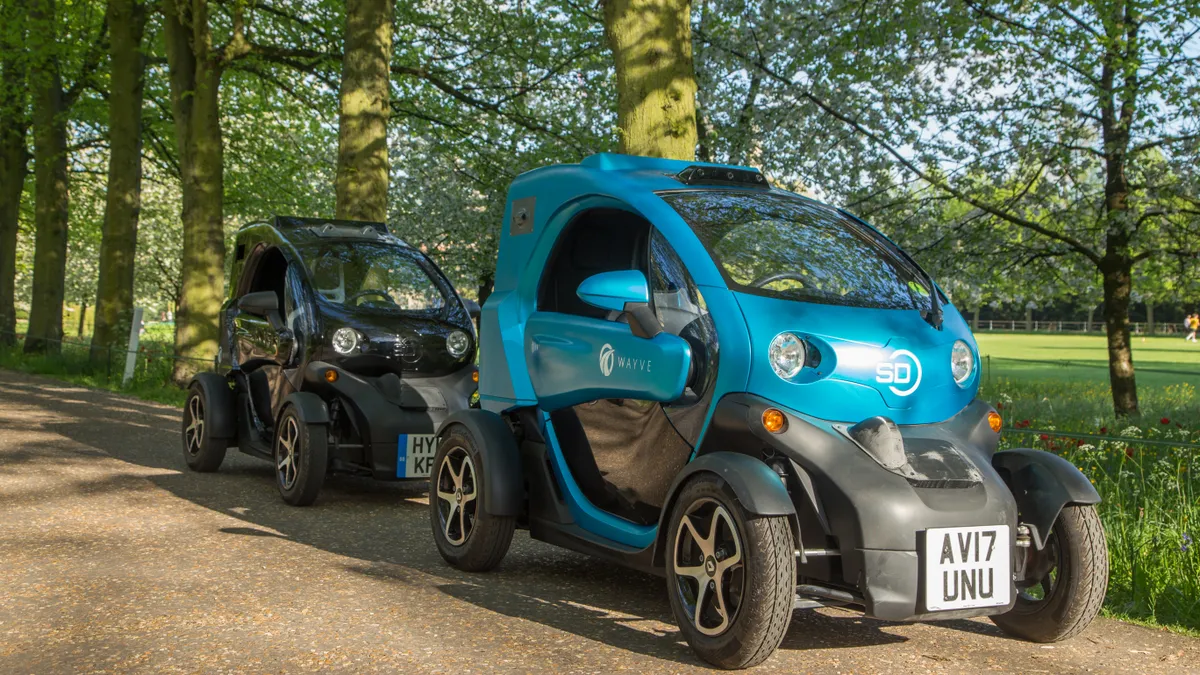Dive Brief:
- An autonomous vehicle (AV) from researchers at Cambridge University in England learned how to drive and stay in its lane in just 20 minutes using artificial intelligence (AI).
- Whenever the car departed from its lane, the researchers stopped and corrected it, using an algorithm that punished the car for making mistakes and rewarded it for traveling without the need for human involvement.
- The AV from Wayve, a startup founded by members of the university’s Engineering Department, used a single camera on the front of a Renault Twizy. The car was fitted with a processing unit to analyze the camera’s feed and then run a machine learning program.
Dive Insight:
A major concern around AVs continues to be safety and whether the computer-controlled cars will be capable of reacting to their surroundings — something that is particularly complicated in urban environments where they need to react to numerous stoplights, intersections and unforeseen hazards like pedestrians that walk into the street with no warning. According to the team behind Wayve, this AV appears capable of learning what to react to and how to react to it, using the safety driver’s interventions as feedback to help it learn from its mistakes.
In a blog post outlining their experiments, the researchers said with this method, a driving algorithm could be deployed that is 95% the quality of a human driver, then with a full day of driving around and learning from the safety driver’s reactions to various scenarios, the system would improve even more. "After a few months, the system may be super-human, having benefited from the feedback of many different safety drivers," the scientists wrote.
If this method is successful, it could be a game-changer in AV safety. Despite many people saying that removing human error from driving would cut crashes dramatically, there have still been concerns over how truly safe AVs can be. The death of a woman crossing the street in Tempe, AZ after being hit by an Uber-owned AV gave many pause, especially as the AV’s software detected Elaine Herzberg as she crossed but did not react.
That incident also raised concerns around the actions of the safety driver, who was found by the Tempe Police Department to be distracted by streaming video on her phone before the crash. This method from Cambridge will require the safety driver to be fully engaged and ready to teach the AV, but with this more active machine learning, that should be less of a concern than Uber’s.












